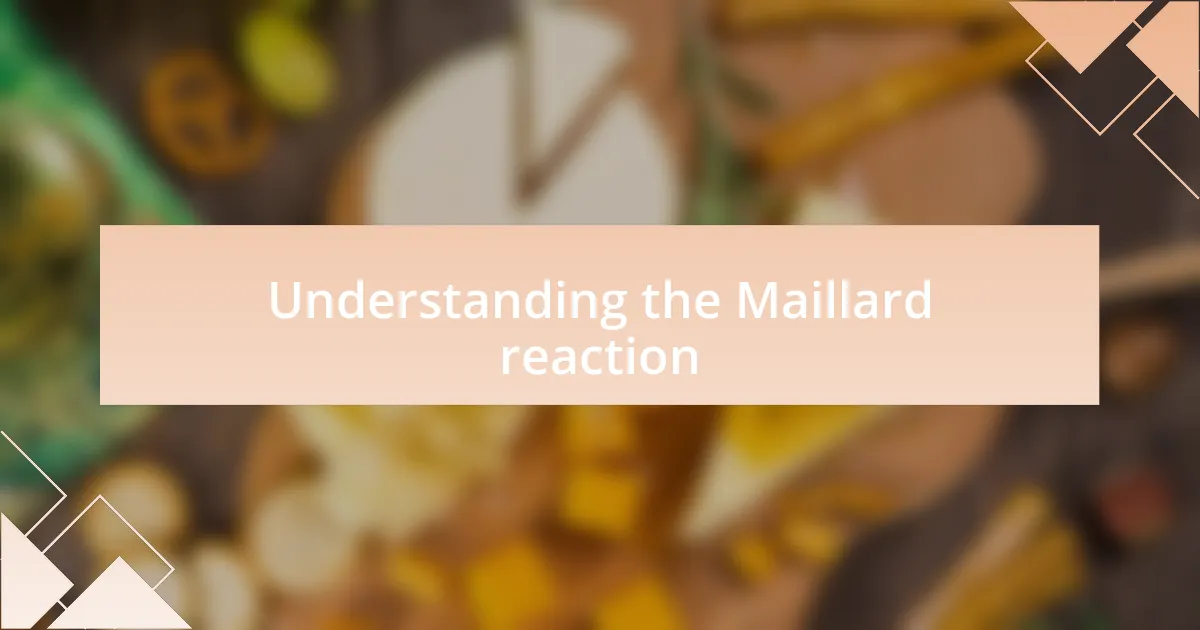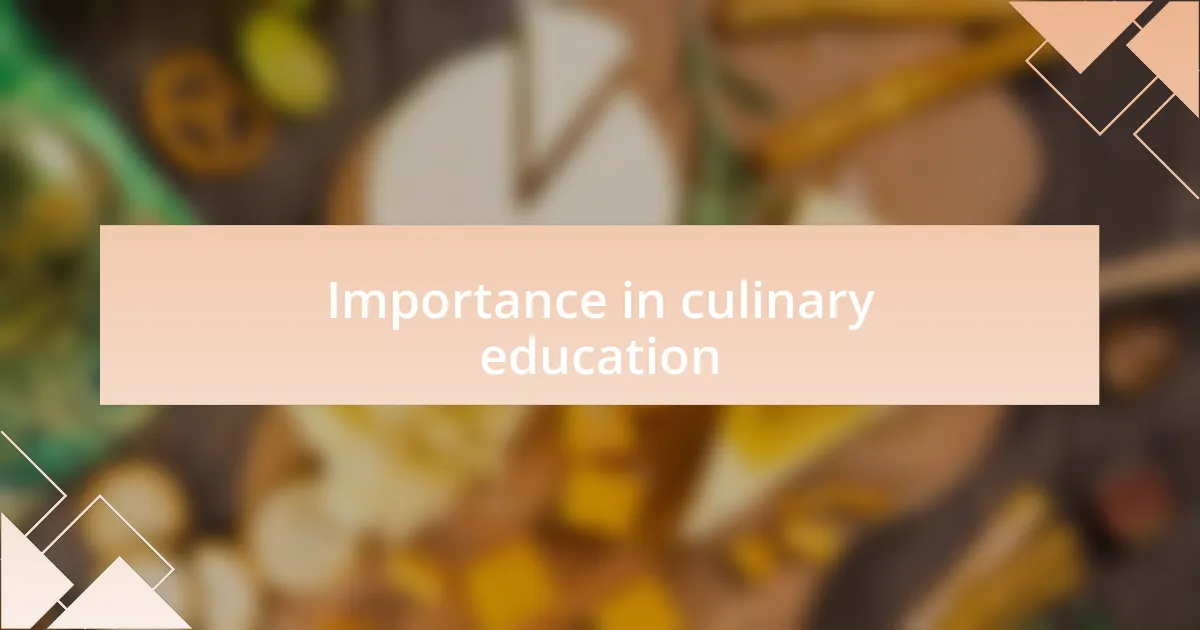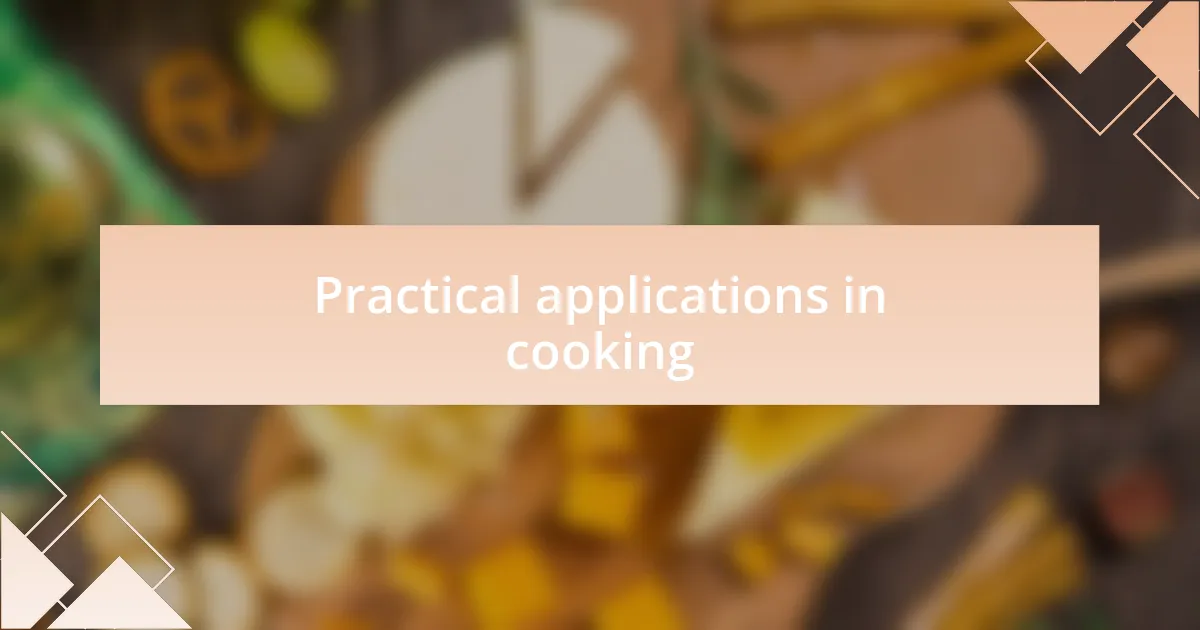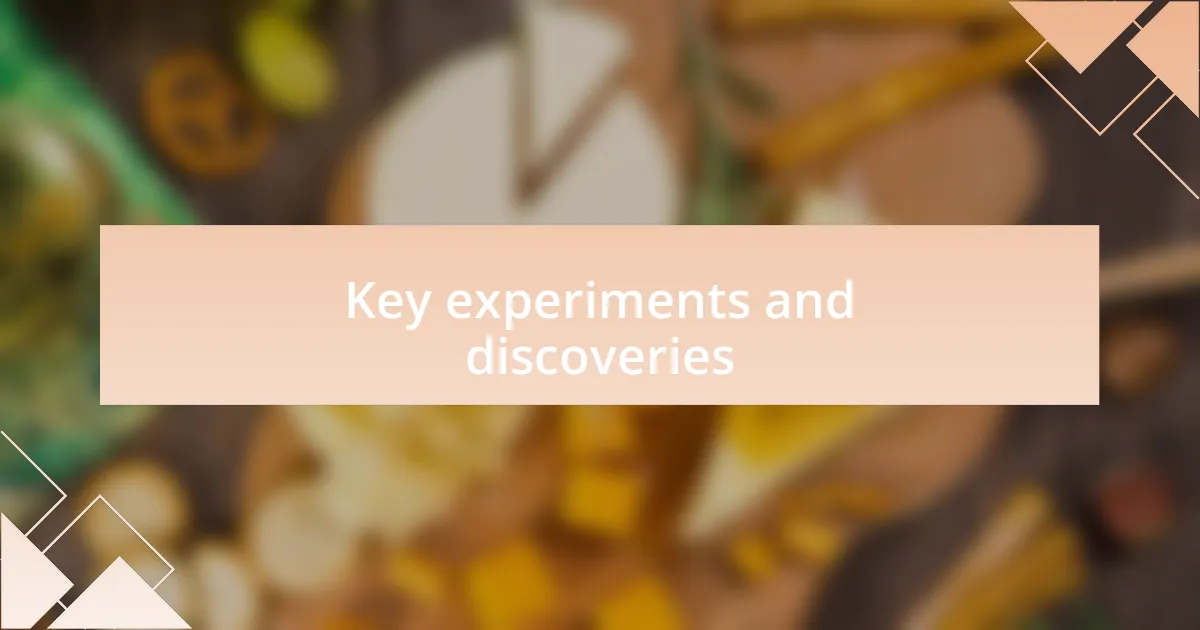Key takeaways:
- The Maillard reaction enhances flavor and visual appeal in cooking, transforming simple ingredients into complex dishes.
- Understanding the Maillard reaction is crucial in culinary education, enabling aspiring chefs to master techniques and innovate beyond recipes.
- Experiments with grilling, baking, and caramelization illustrate the profound impact of heat in unlocking flavors and improving textures.

Understanding the Maillard reaction
The Maillard reaction is a complex chemical process that occurs when proteins and sugars in food combine under heat, resulting in that delicious browning we all adore. I remember the first time I saw this reaction in action while toasting a slice of bread. Watching as it transformed from pale to golden brown sparked a sense of wonder in me—what causes this change?
As the food cooks, the Maillard reaction not only enhances flavor but also adds depth and complexity to our meals. When I experimented with searing meat, I noticed how those beautiful brown crusts were not just for looks; they were packed with rich, savory flavors. Isn’t it fascinating how such a simple act of cooking can unlock a bounty of taste?
Understanding the Maillard reaction has changed the way I approach cooking. It’s more than just preparing a meal; it’s an opportunity to create something extraordinary through science. Have you noticed how a perfectly roasted vegetable not only looks appealing but also tastes better? The interplay of heat and time is crucial, and mastering it can elevate even the simplest dishes into culinary masterpieces.

Importance in culinary education
When it comes to culinary education, grasping the Maillard reaction is essential for anyone aspiring to create remarkable dishes. I recall a class where our instructor emphasized this reaction; it was eye-opening to realize that great cooking is grounded in chemistry, rather than relying solely on intuition. Why is that important? Because understanding the science can empower us to adjust our techniques for better results, ensuring we’re not just following recipes but truly mastering them.
The implications of the Maillard reaction go beyond taste; they touch on presentation as well. I remember plating a dish where I strategically used browning to enhance visual appeal. Clients often eat with their eyes first, right? This aesthetic transformation, powered by the Maillard reaction, allowed me to elevate my dishes, making them not just food, but an experience. Knowing how to create those inviting colors can be a game-changer in professional kitchens.
Moreover, teaching the Maillard reaction in culinary programs prepares students for real-world challenges. In my early days, I faced difficulties achieving that perfect sear on a steak. Understanding the reactions at play helped me troubleshoot my techniques. This knowledge encourages future chefs to experiment confidently, crafting unique flavors and textures that truly express their culinary voice. Isn’t that what we strive for in our culinary journeys?

Practical applications in cooking
When I first applied the knowledge of the Maillard reaction in my cooking, it was like uncovering a secret ingredient. For instance, grilling a piece of chicken at the right temperature transformed it into a beautifully browned creation, amplifying flavors that had previously eluded me. Have you ever tasted a dish and wondered why it packed such a punch? That depth comes from understanding how caramelization and browning change the very essence of our ingredients.
One memorable experience was while experimenting with bread making. I started with a simple dough but discovered that the right baking temperature could create that golden crust that makes fresh bread so irresistible. I would pull the loaf out of the oven, feeling a rush of pride and curiosity—how simple heat could yield such complex flavors was a revelation. Isn’t it amazing how something as straightforward as cooking could become an exciting scientific adventure?
Learning about the Maillard reaction has reshaped my approach to sauces, too. I vividly remember crafting a rich, savory sauce from scratch, allowing the onions to caramelize just right. Their sweetness mingled with browning to create an utterly complex flavor profile that left my taste buds dancing. This interplay of science and art isn’t just for professionals; it’s an invitation for home cooks to explore and discover. What if every home kitchen could harness this technique? The potential is tantalizing!

Key experiments and discoveries
One of the key moments in understanding the Maillard reaction for me happened during a steak dinner I was preparing. I remember searing the meat at a high temperature, watching it transform from dull to a gorgeous brown crust. The scent that filled the kitchen had me wondering: how could something so simple create such profound flavors? It was in that moment that I truly grasped the magic of chemistry in cooking.
Delving into desserts, I stumbled upon the importance of toasting nuts. The first time I tossed a handful of raw walnuts in a pan, I had no idea what to expect. But once they hit the heat, the aroma and color change were astonishing. As they browned, the flavor deepened, becoming richer and more complex. It sparked a realization in me—I was witnessing the Maillard reaction in action, and it completely elevated my baking.
Another significant discovery was with caramelizing sugar. I decided to experiment with a batch of caramel sauce, and as the sugar heated, I marveled at how it transformed from a grainy substance into a beautiful liquid gold. It prompted me to question: what other ingredients could I treat this way to unlock hidden potential? This exploration fueled my passion for cooking—the world of flavor chemistry felt endless, and each experiment became an exciting journey of taste.